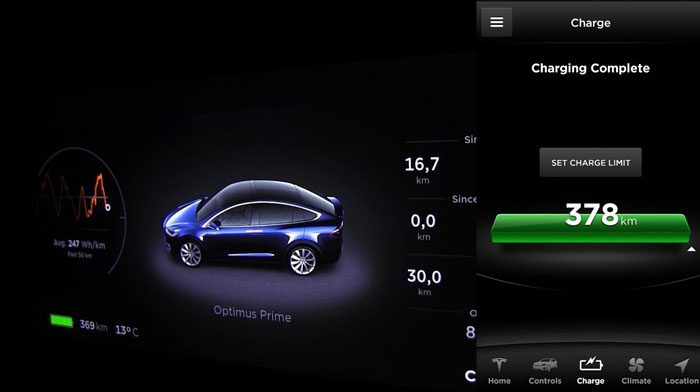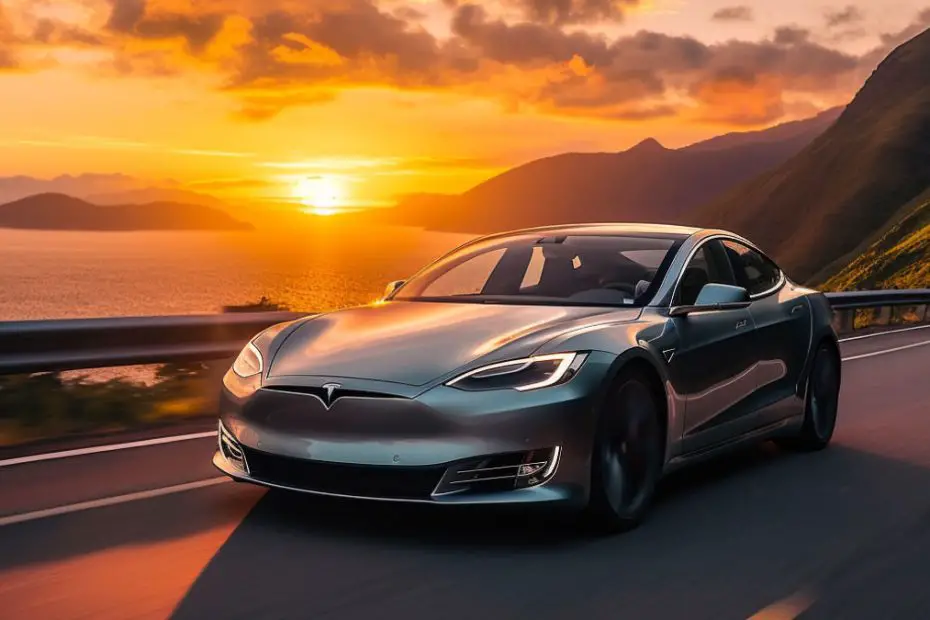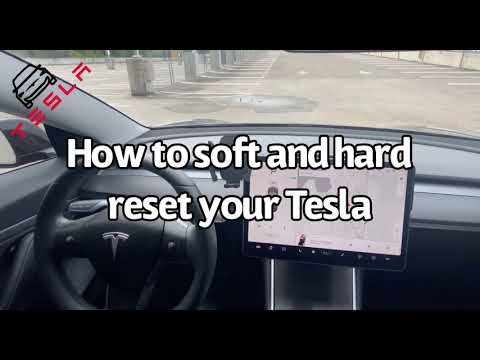Regenerative Braking is an advanced braking technology for electric vehicles. This system not only helps to slow down your car but also converts kinetic energy into electricity.
But why is Tesla’s regenerative braking not working? Usually, this issue arises because of low temperature, battery issues, changing tires, software glitches, incorrect settings, etc. Though these causes look so serious, but they are very easy to solve.
Here, throughout this article, we will discuss these causes and their troubleshooting methods. So, if you are interested, then continue reading.
Troubleshooting Tesla Regenerative Braking Not Working Issue
In your Tesla car, when you lift your foot from the accelerator pedal, the car begins automatically braking. This is called Regenerative braking technology or Regen Braking.

In this system, the electric motor (which drives the car) becomes a generator. It turns the car’s Kinetic Energy into electrical energy, which is later used to charge the battery.
But, if any issues appear either technically or mechanically, Regenerative braking stops working. So, let’s see what those causes are and how to troubleshoot them easily.
1. Low Temperature
This is the most common reason behind Tesla’s regenerative braking not working issue. Usually, cold temperature (below 40–50°F (4.44–10°C) slows down the chemical reactions inside the battery.
As a result, the battery can’t store sufficient energy from the regenerative braking system. Ultimately, because of this, the regenerative brakes can’t work properly or stop working.

Diagnose and solution:
To solve this issue, follow these steps:
- Step 1: First, by using the Tesla app or control panel, turn on your Tesla preconditioning feature. This allows you to warm up your battery, which offers optimized regenerative braking and better performance.
- Step 2: If this function doesn’t work or you don’t know how to activate it, then drive your car a little bit. During this driving, the battery will be warmed up, and the regenerative braking issue will be resolved.
2. Battery Charge Level
In the Regenerative braking process, your vehicle’s electric motor works as a generator and produces AC current. Later, a Power Converter circuit converts this AC current into DC current and charges the battery.
When the battery is fully charged, the current has nowhere to go. As a result, the Regenerative braking system can’t work properly or temporarily stops working.

Diagnose and solution:
Follow these steps to solve this issue:
- Step 1: First, don’t charge your car battery to 100%. Always try to keep your battery charge level between 20% and 80% for the best performance and lifespan.
- Step 2: In any case, if the battery has been fully charged, drive a few minutes to lower the charge level (like 95% to 90%). After that, test the regenerative braking, and if everything is okay, then it will start working.
3. Software Glitches
As Tesla is an electric car, so most of its functions, like speed control, regenerative braking, etc., are operated by software. Depending on the driving condition and situation, this software calculates and controls different operations.
But, when this software becomes outdated or glitches, it can’t control those functions and creates several issues. This could affect not only the braking system but also the overall vehicle performance.

Diagnose and solution:
Here are some steps to solve this issue:
- Step 1: Update the Software.
Make sure that the software is updated. To check it, first make sure your car is connected to WiFi. Then, tap on the “Car” icon from the bottom left corner of your touchscreen control panel. Next, from this page, tap on the “Software” option and scroll down.
If any software update is available, then you will see the “Updates Available” notice. Otherwise, it’ll show “Your car software is up to date.” Here, if any updates are available, then install it. Hopefully, the issue will go away.
- Step 2: Soft reset the Tesla.
If the software is already updated, or after you update, the issue still exists, then try soft resetting it.
To do it, put the car in park mode and place your fingers on the two scroll buttons on the steering wheel. Now press and hold those buttons at the same time and keep pressing until the touchscreen control panel turns off. After a few seconds, your Tesla will restart, and you will notice a Tesla logo on the screen.
If the braking issue arises because of a software glitch, then it will be solved by now. But, if it is not solved, then try the next troubleshooting method.
4. Incorrect Settings:
It’s possible that, by accident or on purpose, you changed some settings related to regenerative braking. Because of this, the system may not work, or its performance may decrease significantly.
Diagnose and solution:
To solve this issue, it’s better to reset or reboot your car. This will take your car to the default settings, and the regenerative braking will start working again.
In the previous section, we describe how to reset it. If you are still confused about how to do it, then follow this video:
5. Worn Out Or Damaged Tire
In fact, Tesla’s onboard computer always checks all the tire pressure and their conditions. This means that if one of these tires is damaged, regenerative braking and overall vehicle handling could be negatively affected.
A tire could basically be damaged because of regular wear and tear, tiny nails, cracks, bulges, razor-sharp potholes, etc.
Diagnose and solution:
Follow these steps to solve this issue.
- Step 1: Inspect all the tires and make sure they are in perfect condition and have enough tire pressure. Here, the recommended tire pressure is 42 PSI.
- Step 2: While checking, if any tire looks damaged or worn out, then you have to replace it. Depending on the model, a new tire may cost between $200 to $450.
If you want to replace it by yourself, then follow this video. Otherwise, take your car to a mechanic.
6. Tire Change
Basically, a Tesla car is designed in a way that it continuously recalibrates itself. So, after changing a tire in your Tesla car, you may face issues with its regenerative braking system.
This is because, once new tires are installed, your Tesla’s system requires some time to recalibrate this.
Diagnose and solution:
To overcome this issue, you just need to drive your car for about 1 or 2 hours. But, if you want to quicken this process, then go to Service > Wheel & Tire > Tires and select winter tires.
After this, the car’s wheel calibration will done, and the regenerative braking system will start working again.
7 Tips To Prevent Tesla Regenerative Braking Not Working Issue

Aside from knowing the troubleshooting methods, you should also know how to prevent regenerative brake issues. In addition to preventing any unwanted crises, these tips will help you to save a lot of money.
- Don’t charge your car 100%.
- Always park your car in warm places.
- Before driving aggressively, let the battery warm up for a few minutes.
- Always try to keep your car software updated.
- Gradually slow down and speed up your car.
- Try to avoid driving your Tesla in extremely cold weather.
- Regularly inspect your tires.
FAQs
After reading this far, you might have got all the answers you were searching for. In this FAQ section, we tried to cover some additional frequently asked questions.
No, the regenerative brakes are not 100% efficient. This is because when kinetic energy is converted back into electricity, it loses around 10-20% of its energy. But compared to traditional systems, it still increases range and reduces brake wear.
Though regenerative braking technology is full of advantages, there are some downsides, too. For example, they are less effective/reliable at high speed and when braking suddenly. It can also feel strange to certain drivers, which can be jarring at first.
Generally, Regenerative braking significantly reduces the use of traditional braking systems, which extends brake services. Here, most electric vehicles with this technology can go up to 100,000 miles before needing any servicing.
Final Verdict
Hopefully, you have successfully solved your Tesla car regenerative braking not working issue. Basically, in our modern world, electric vehicles and their regenerative or regen braking are among the most effective innovations.
This technology reduces reliance on fossil fuels and saves money on charging. But, sometimes, they may not work perfectly, and in that situation, you shouldn’t worry much. Just carefully try to understand the reasons and solve them accordingly. You can also get help from an expert if you are uncomfortable with this.


